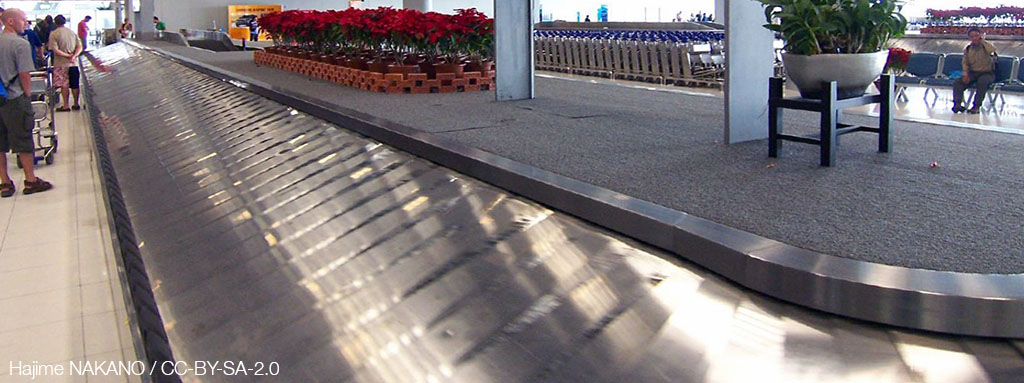When we think about the waste generated by an airport, we conjure up images like oil or grease waste from aircraft maintenance, or simply the waste passengers throw away during their flights. This kind of waste tends to be well under control, especially at airports where an environmental management system has been implemented. However, there are many other kinds of waste that constitute a real challenge for airport waste management, and it is more than likely that we have never stopped to think about them.
What can an airport do if it confiscates more than a tonne of geological materials (rocks) in just six months?
Given the millions of passengers throughout the world who pass through security filters to enter the boarding lounge, we can well imagine the variety of materials that are confiscated at that point for a large number of reasons. Who has not had a personal hygiene product confiscated at some time at a security control? As we all know, current regulations oblige passengers to remove any liquids, creams, gels and aerosols from their hand baggage if they do not meet certain requirements, but what is done with all the materials that are confiscated?
In general, this kind of materials – which we cannot even consider as waste – are disposed of in containers, which are then sealed and the contents of which are destroyed. Some environmental associations have denounced this bad practice, since some of these products, like aerosols, should be segregated and managed in a specific way. Furthermore, we cannot obviate the value many of these products, such as creams and cosmetics, have since they can be considered as luxury products. However, all this is hard to manage for reuse because it is necessary to check whether the contents each package really contains are what its label specifies.
It seems difficult to find a solution to this problem. However, quite a few airports are attempting to do so by signing agreements with NGOs or associations for the latter to take charge of segregating what can really be used and to manage correctly what cannot be taken advantage of. This is the case of Menorca Airport, where Aeropuertos Españoles y Navegación Aérea (AENA) signed an agreement on the management of objects that do not meet the regulations in force. Nevertheless, even in these cases, the beneficiaries sometimes find themselves with materials they had not even foreseen and which are a real challenge to manage. This is precisely what happened at Menorca Airport, where more than a tonne (1,193 kilos to be more exact) of geological materials were confiscated which passengers tried to bring back home as a souvenir in their luggage – including stones, sand and even rocks from the beaches they had visited – in only a six-month period (March to October 2016). This practice is forbidden, because it could lead to a deterioration of the habitats they come from if it happens on a large scale. In this case, the solution was to classify them by composition, colour and size, and they are now being returned to the island’s beaches having similar geological features.
To my mind, this kind of regulations, which lead to generating thousands of kilos of objects all over the world, should be linked to the implementation of a management methodology that allows for the materials’ recovery, recycling and proper disposal, in that order. Nonetheless, as we have seen, unexpected materials will continue to crop up which will involve a challenge for their proper treatment.



